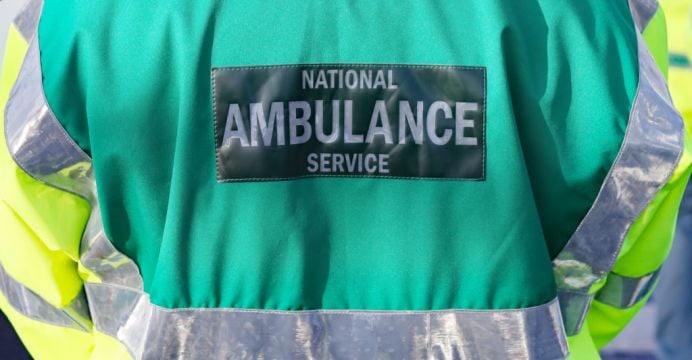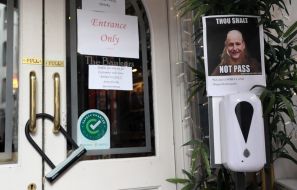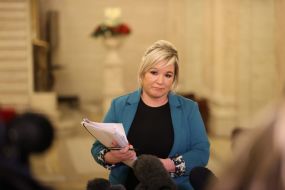Paramedics from the Republic are set to help their Northern Ireland counterparts this weekend.
It comes as the health service in the North continues to face severe pressure amid the coronavirus pandemic.
Michael Bloomfield, chief executive of the Northern Ireland Ambulance Service (NIAS), said the move is “relatively unusual” and reflects the pressure they are under.
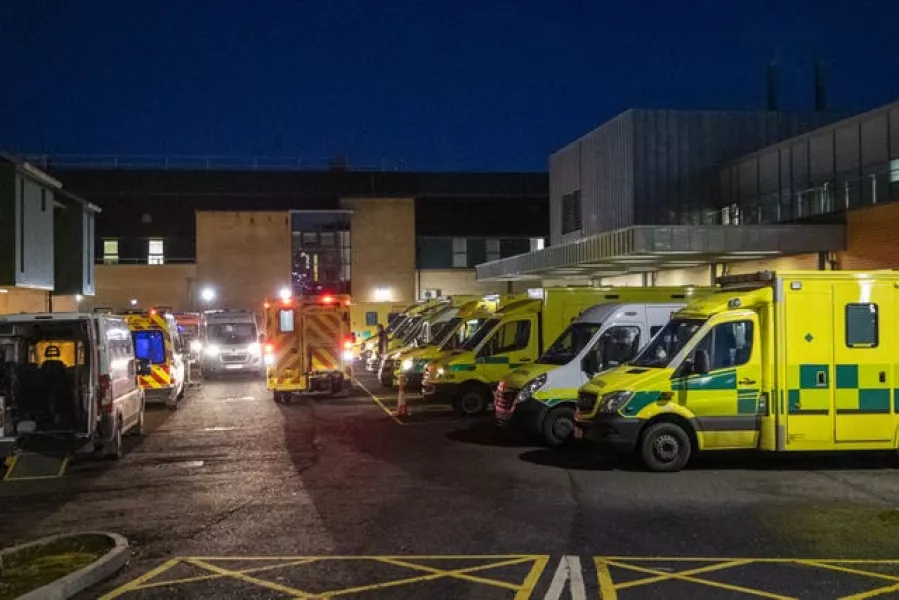
“We had support from our colleagues in the National Ambulance Service last year during a particularly challenging time, that said, on a day-to-day basis we respond to calls in the Republic of Ireland and colleagues from the National Ambulance Service respond to calls here on an individual basis, but in terms of crews coming up to work an entire shift, it’s not something we do often and reflects the pressure we are under,” he told the BBC.
On Tuesday, queues of ambulances were witnessed at accident and emergency departments (EDs) across Northern Ireland as patients were treated in car parks due to a lack of capacity inside the hospitals.
At one point, 17 ambulances containing patients were lined up outside the ED at Antrim Area Hospital.
On Thursday, the hospital occupancy rate was 104 per cent according to the Northern Ireland Department of Health’s Covid-19 dashboard.
The Department of Health #COVID19 dashboard has been updated with latest data.
656 individuals have tested positive for COVID-19 in the past 24 hours. Sadly, a further 12 deaths have been reported (2 deaths were outside the 24 hour period).https://t.co/YN16dmGzhv pic.twitter.com/agGsJAams1— Department of Health (@healthdpt) December 17, 2020
Mr Bloomfield said it remains “exceptionally busy”.
“There is no doubt that Monday night and into Tuesday was probably one of the most difficult and challenging periods that we have had for quite some time, it has improved slightly over the last couple of days but still exceptionally busy right across the health and social care system,” he said.
“There are many patients in every emergency department waiting for admission, that then results in delays in turning ambulances round at emergency departments and when an ambulance is waiting outside an emergency department to hand its patient over into the emergency department, it is not available to respond to calls so that does has an impact on our response times.”
Mr Bloomfield said the NIAS receive between 600-700 emergency 999 calls every day, he said around 150 of those calls a day are Covid-related.
“It forms a significant portion of our calls but on top of that people are still taking seriously ill or involved in other emergencies for all of the normal course of events, so we’re seeing the full range of reasons for responding to calls but Covid forms a significant part of them,” he said.
— NIAS (@NIAS999) December 14, 2020
Earlier, the NIAS released a statement outlining the challenges it faces at this time, which include a “significant” number of staff unavailable for work at any time as they are required to self-isolate as a result of themselves, or a member of their household, testing positive or displaying symptoms of Covid-19.
It said the service have taken a range of measures to mitigate staffing pressures, which include to re-assign some of its non-emergency tier to support their colleagues in response to lower acuity emergency calls.
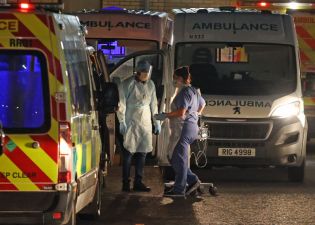
It is also supplementing capacity through the use of voluntary and private ambulance service providers and has a memorandum of understanding with colleagues in the National Ambulance Service in the Republic as well as similar agreements across the UK.
“This weekend the NAS has made available a number of ambulance crews to support NIAS in our operational response,” the statement said.
“This additional capacity is very welcome and NIAS are extremely grateful to our colleagues in NAS and their staff for agreeing to, for the second time over the past 12 months, lend their support at a challenging time.”
